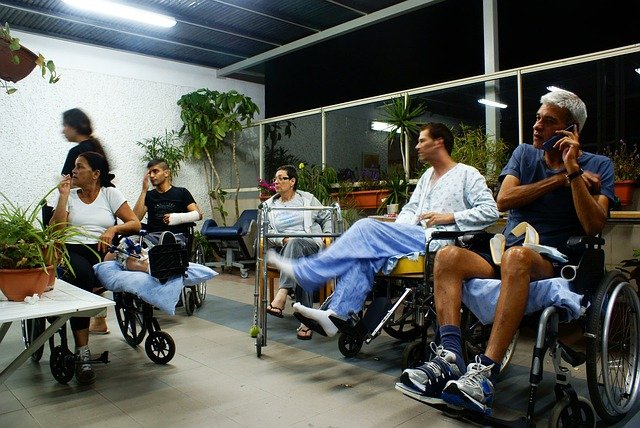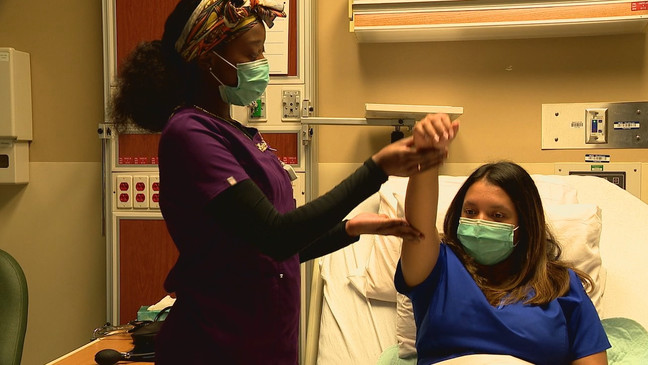To begin with, what is a patient safety attendant?
Accompanies patient and ensures patient safety during transportation, testing, and procedures occurring away from the patient’s normal environment. Creates a secure, risk-free environment for patients using their understanding of infection control procedures, fall prevention protocols, and self-harm prevention.
For more specific information, keep reading.
Table of Contents
What Is A Patient Safety Attendant?
By continuously observing and monitoring patients at high risk, the Patient Safety Attendant (PSA) contributes to high-quality, patient-centered care. The PSA reduces the risk of falls and unintentional or intentional self-harm by working with the patient care team to remove obstacles from the patient environment. Additionally, the Sitter may help with routine daily tasks.
Salary & Outlook Of Patient Safety Attendants
The amount paid to patient safety attendants varies according to their level of education and experience, the size of the company, and the location.
- Median Annual Salary: $75,221 ($36.16/hour)
- Top 10% Annual Salary: $135,000 ($64.9/hour)
Over the upcoming ten years, the demand for patient safety attendants is anticipated to increase on average.
As the large baby-boom population ages and people live longer, there will be a continued rise in the demand for healthcare services. To guarantee patient safety and functional equipment, patient safety attendants will be required.
Primary Responsibilities Of Patient Safety Attendants
- If a suitable staff member doesn’t relieve them, they always stay by the assigned patient’s bedside.
- helps the patient regain their bearings when they are confused or agitated.
- Remove any equipment that is broken or has obvious hazards from the immediate environment and make any necessary reports.
- records observations in accordance with hospital regulations.
- ensures that the expectations, goals, and responsibilities are clearly understood in order to achieve patient and staff safety by meeting with the patient’s nurse at the start of the shift to review the patient care plan and activities.
- complies with any recommended isolation precautions.
- Monitoring equipment is observed, and nursing staff is informed when an alarm occurs.
- works safely and with constant vigilance.
- performs additional tasks as directed.
Physical Requirements Of Patient Safety Attendants
- constant standing and moving.
- oral communication that frequently combines speech and hearing.
- a lot of hearing is used to hear alarms, broken machinery, and other sounds, as well as to distinguish body noises.
- a lot of pushing, pulling, and lifting of objects weighing 0 to 25 pounds.
- frequent grasping, reaching, and keyboard use.
- vision that is frequently used to recognize and distinguish between colors as well as distances near (20 inches or less) and far (20 feet or more).
- repetitive foot, leg, and arm movements, as well as occasional bending, stooping, crawling, sitting, and squatting.
- occasional use of vision to assess spatial relationships and distances.
- occasional pushing, pulling, and lifting/carrying of objects weighing 25–50 lbs.
- occasionally moving and lifting patients.
- occasional use of smell to identify or detect odors
- Occasional driving.
Qualifications Of Patient Safety Attendants
- Preferably a high school graduate or equivalent.
- The American Heart Association currently certifies healthcare providers in BLS.
- 1+ year(s) of experience in a healthcare setting preferred.
- 1+ year(s) of experience in an acute care setting preferred.
- English reading and communication proficiency
- basic familiarity with computers.
Patient Safety Attendant Skills Of Patient Safety Attendants
The following abilities are necessary for patient safety attendants to succeed:
Communication
Information transfer to another person is referred to as communication. You might need to interact with patients, other medical professionals, and patients’ families in your capacity as a patient safety attendant. Effective and compassionate communication skills are critical.
Attention To Detail
Being detail-oriented means being able to pick up on even the smallest alterations in your surroundings. Because it enables them to identify any potential dangers or safety risks, this skill is crucial for patient safety attendants. For instance, if a patient has a latex allergy, the patient safety attendant can detect the use of a latex glove and notify the nurse to switch out the gloves.
Empathy
Understanding and experiencing another person’s emotions is known as empathy. You might be the first person to notice a patient’s discomfort or pain because you are responsible for patient safety. The quicker you can identify and meet a patient’s needs, the more likely it is that they will feel better and continue receiving treatment from you.
Flexibility
The capacity for adapting to shifting conditions is known as flexibility. You might have to work different shifts than you usually would if you are a patient safety attendant. You might also be asked to take on new responsibilities or cover for other employees. You can continue to provide your patients with high-quality care by being adaptable to these changes.
Teamwork
Patient safety attendants collaborate with other healthcare professionals such as nurses, doctors, and other patient safety attendants. They might swap shifts with other attendants, so being able to collaborate with others is crucial. In order to ensure the safety of patients, patient safety attendants should be able to collaborate with their coworkers. See more about Are Cocker Spaniels Hypoallergenic?
Work Environment Of Patient Safety Attendants
Patient safety attendants frequently work in hospitals, but they may also be found in clinics, nursing homes, and rehabilitation facilities. They perform a variety of duties under the direction of a registered nurse or other medical expert, including keeping track of patients’ vital signs, giving personal care, and assisting with therapeutic exercises. In general, patient safety attendants put in a lot of overtime, including on the weekends and on holidays. They might also be expected to work unexpectedly long hours. The work can be emotionally and physically taxing because patient safety attendants are required to be on constant alert for any changes in a patient’s condition.

Trends Of Patient Safety Attendants
The following three trends have an impact on how patient safety attendants operate. In order to keep their knowledge current and keep a competitive edge at work, patient safety attendants will need to stay informed on these developments.
The Need For Better Communication
In many different industries, including healthcare, the need for better communication is becoming more and more apparent. This is so that patient safety can be increased and medical error risk can be decreased thanks to improved communication.
By fostering a climate of open communication within hospitals, patient safety attendants can play a significant part in this trend. They can accomplish this by encouraging staff members to discuss errors they have made and how they might be avoided in the future. They can also work to foster a more welcoming atmosphere where patients and their families feel free to share their questions and worries.
More Focus On Patient Satisfaction
Hospitals are hiring staff members who can deliver superior customer service as they place a greater emphasis on patient satisfaction. This covers medical staff members such as nurses, doctors, and others who deal with patients on a regular basis.
In order to capitalize on this trend, patient safety attendants should hone their skills in providing exceptional customer service. This includes performing tasks like assisting customers and cleaning rooms. In order to assist patients with any inquiries, they should also be knowledgeable about hospital policies and practices.
Greater Emphasis On Quality Control
Hospitals are putting a greater emphasis on the patient safety attendant’s role as they become more concerned with quality control. This is due to the fact that patient safety attendants are in charge of making sure that all hospital equipment is in good working order and that patients are always safe.
Patient safety attendants should make sure that they are knowledgeable about the most recent safety guidelines and all of the hospital equipment in order to capitalize on this trend. Additionally, they ought to be equipped to handle any potential crises.
Ways To Become A Patient Safety Attendant
Patient Safety Attendant careers can be extremely fulfilling. It presents many opportunities for professional development and is a great way to improve the lives of patients and their families.
You must possess a high school diploma or its equivalent and pass a criminal background check in order to work as a patient safety attendant. Additionally, you must complete an accredited training course that covers subjects like patient safety, infection control, and emergency preparedness.
There are many ways to find work once you have your certification. You can apply for jobs directly with hospitals or other healthcare facilities, or you can work for a staffing company that specializes in placing Patient Safety Attendants.
Conclusion
Typically, patient safety attendants begin their careers in entry-level positions. They might advance to supervisory or leadership positions with experience. Some people might also decide to pursue careers in other medical specialties, like registered nursing.

